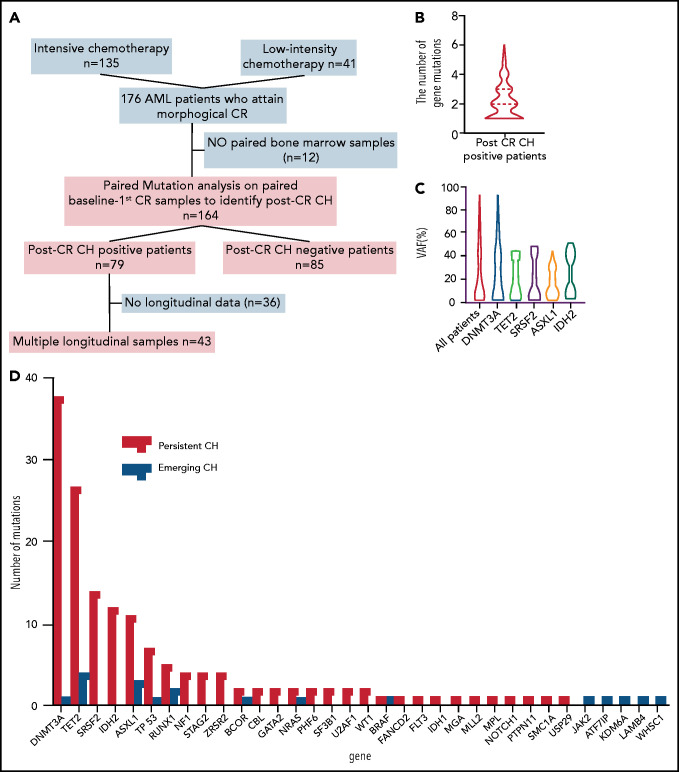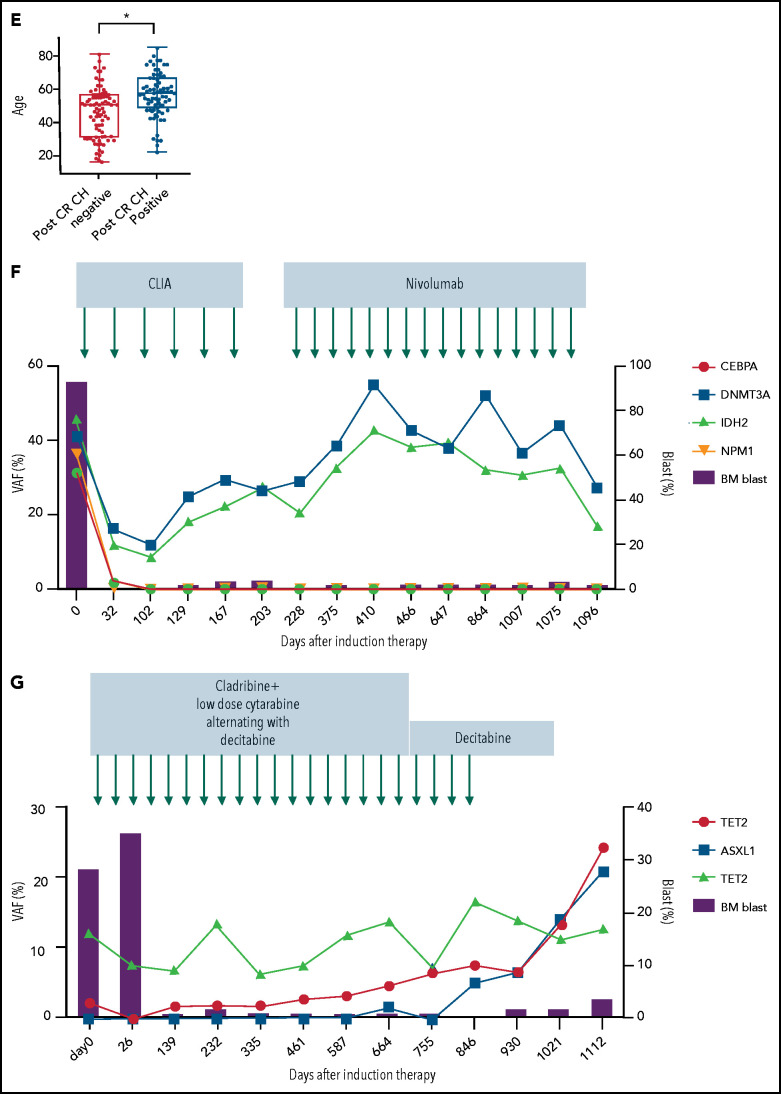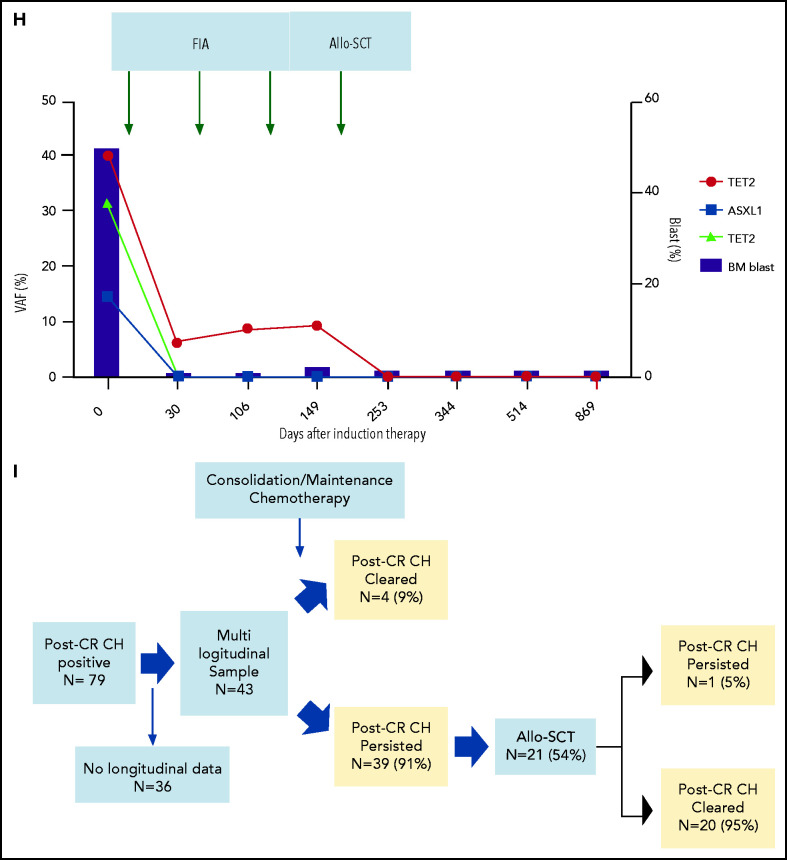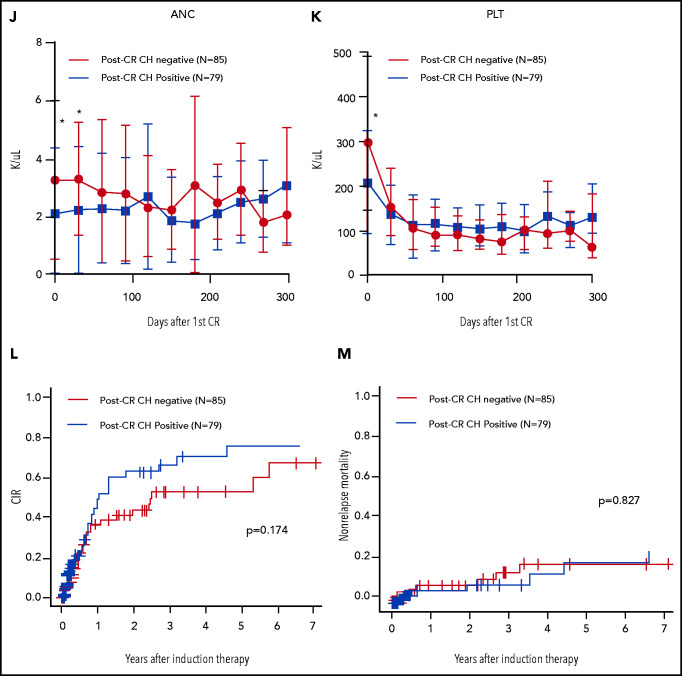Figure 1.
Characteristics, dynamics, and clinical significance of postremission CH in AML. (A) CONSORT diagram for the study cohort. (B) Violin plot showing the distribution of the number of gene mutations detected as post-CR CH. (C) Violin plots showing VAFs of post-CR CH mutations in all patients and based on the mutated genes. (D) Bar graph showing the number of mutations detected as persistent preleukemic CH (red bar) or emerging CH (blue bar). (E) Box plots comparing the age of patients with or without post-CR CH (*P < .001). (F-G) Representative cases with clonal dynamics of persistent preleukemic CH (F), emerging CH (G), and post-CR CH cleared by allo-SCT (H). (I) The summary of the clonal trajectories of post-CR CH in the 43 patients in whom we were able to track the long-term clonal dynamics. (J-K) The long-term trend of peripheral blood counts in patients with (red line) and without post-CR CH (black line). Patients with post-CR CH had significantly lower absolute neutrophil counts (ANC) and platelets (PLT) at the beginning (day 0 corresponds to the first attainment of CR), but later the difference became insignificant. *P < .001. (L) Cumulative incidence of relapse in post-CR CH-patients (black line) and in post-CR CH+ patients (red line). (M) Nonrelapse mortality in post-CR CH−patients (black line) and in post-CR CH+ patients (red line). Data were censored at the time of allo-SCT in first CR. BM, bone marrow; CLIA, cladribine, idarubicin, and cytarabine; FAI, fludarabine, idarubicin, and cytarabine.




